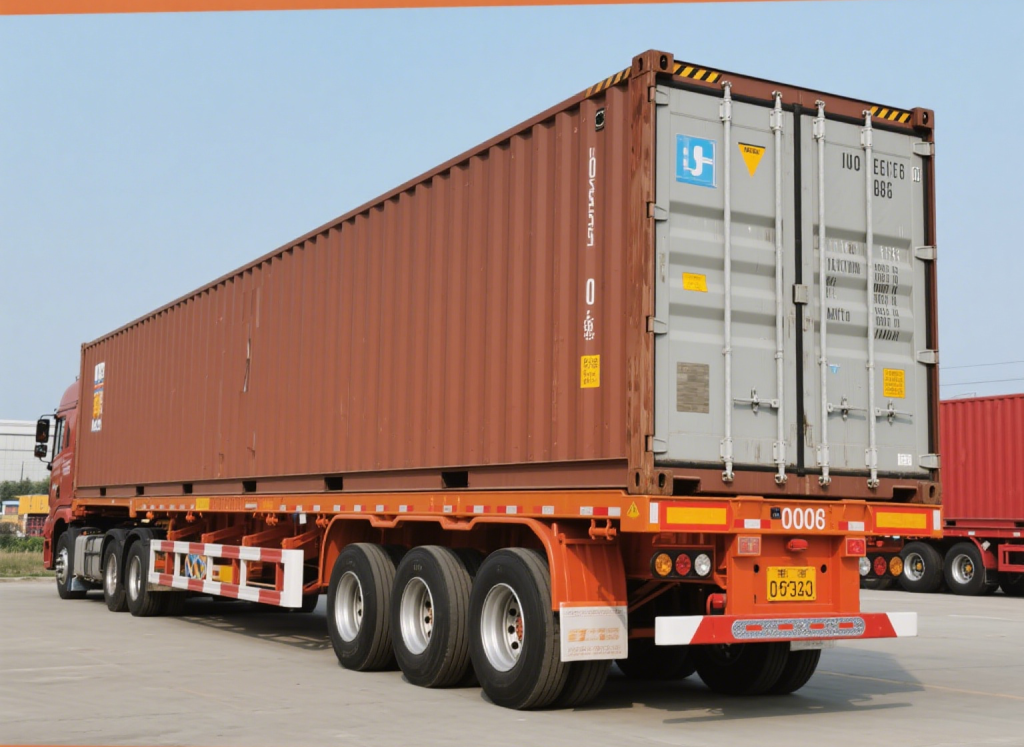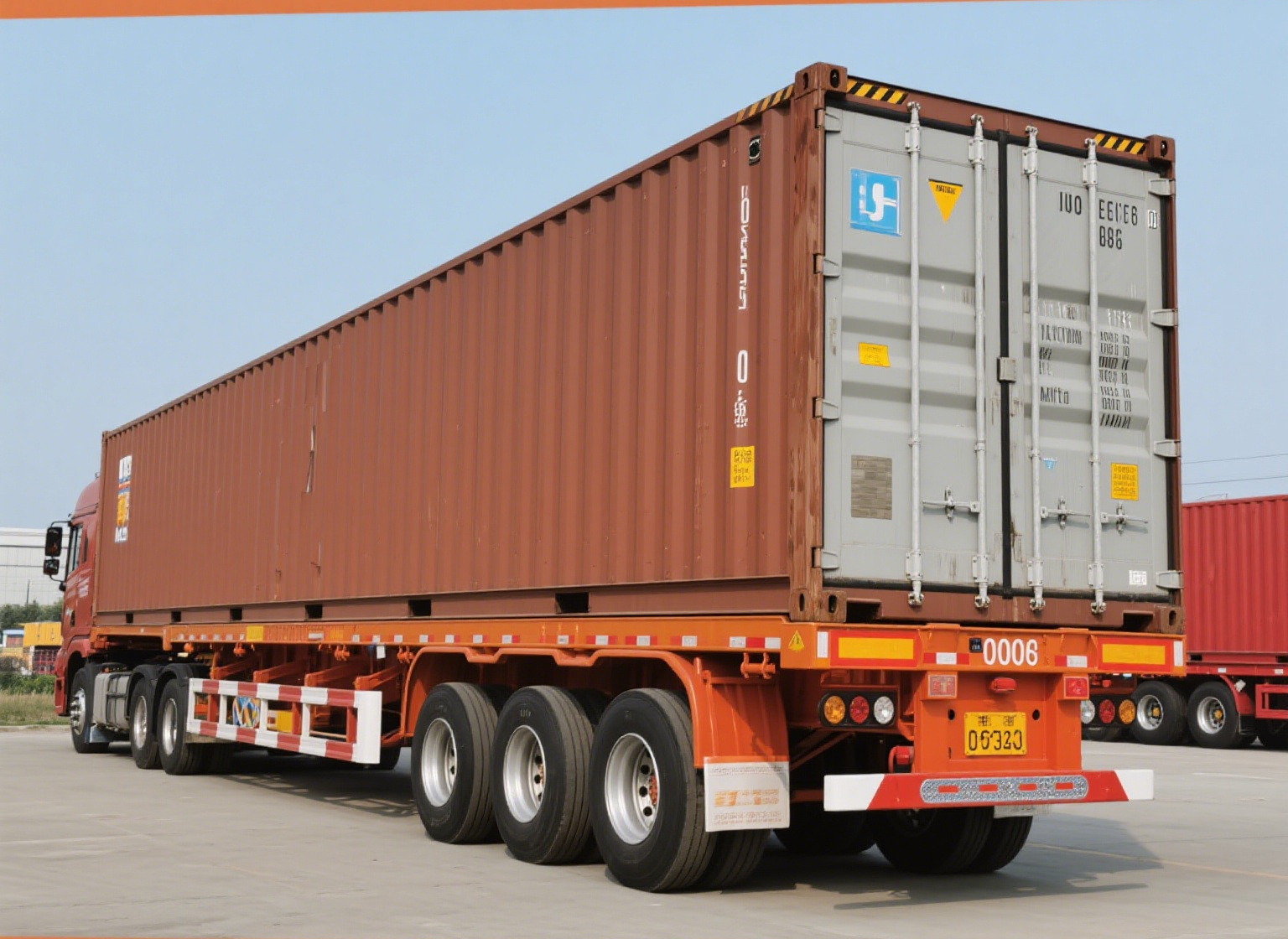“Container semi-trailer” refers to a type of vehicle used for transporting containers. Here is a detailed introduction about it:
Structural Types
- Flatbed Container Semi-trailer: It has a flat cargo platform, usually made of high-quality steel, which gives it high strength and stability. Besides transporting containers, it can also be used to carry ordinary long and large goods, such as construction materials and mechanical equipment. Its structural features make the loading and unloading of goods more convenient, and loading and unloading operations can be carried out from multiple directions like the side and the end of the cargo platform.
- Skeleton Container Semi-trailer: It has no cargo platform. The container is directly mounted on the chassis skeleton and fixed as a load-bearing component of the semi-trailer by the twist lock device. This type of semi-trailer has a relatively light self-weight, which can effectively reduce transportation costs and improve transportation efficiency, and it is widely used in container transportation.
Size Specifications
- Common sizes include 20 feet, 40 feet, 45 feet, and 48 feet, etc., to adapt to the transportation of different standard containers.
Component Construction
- Frame: It is the main load-bearing component of the semi-trailer, usually made of high-strength steel, with sufficient strength and stiffness to bear the weight of the container and the goods.
- Axles: Generally designed with three or two axles. The load-bearing capacity of the axles directly affects the load capacity of the semi-trailer. Common axle brands include Fuwa, etc. Tires, braking systems, and other components are installed on the axles.
- Suspension System: It is used to connect the frame and the axles, playing the role of buffering and shock absorption to ensure the smooth driving of the vehicle. Common suspension systems include leaf spring suspension and air suspension.
- Traction Device: Located at the front end of the semi-trailer, it is used to connect with the tractor to transmit traction and braking forces. Usually, the connection method of a kingpin and a fifth wheel is adopted, which enables the quick connection and separation of the semi-trailer and the tractor.
- Twist Lock Device: Installed on the frame, it is used to fix the container and prevent the container from moving or shaking during transportation. The twist lock device has a reliable locking performance, which can ensure the safe transportation of the container under various road conditions.
Application Scenarios
- Port Transportation: In port terminals, container semi-trailers are used to transport containers from the ship to the yard after unloading, or to transport the containers in the yard to the ship, realizing the connection between sea and land transportation.
- Road Transportation: On the road, container semi-trailers can transport containers from the place of dispatch to the place of receipt, providing a door-to-door transportation service, and they are one of the main tools for long-distance container transportation.
- Multimodal Transport: In multimodal transport, container semi-trailers can be combined with other transport modes such as railway transport and air transport to realize the rapid transfer and combined transport of containers, improving transportation efficiency and convenience.
Advantages
Good Cargo Protection: When using containers to transport goods, the goods can be directly loaded in the shipper’s warehouse and unloaded in the consignee’s warehouse. When changing vehicles or ships halfway, there is no need to take the goods out of the container for reloading, effectively protecting the safety and integrity of the goods.
Efficient Transportation: It can be quickly loaded and unloaded, and can be conveniently transferred from one transport vehicle to another, greatly improving the transportation efficiency of goods.
Strong Versatility: It can be used repeatedly for a long time, has sufficient strength, is suitable for the transportation of various types of containers, and can be customized and modified according to customers’ needs.


